2020 Hyundai Palisade Review and First Drive

Once upon a time, American automakers like Cadillac and Lincoln were the go-to brands if you wanted a plush luxury car with supple suspension and a relaxed powertrain.
Now there’s a new place for you to get a soft-riding land yacht: Korea. Just look at some of the cars Hyundai and Kia are pumping out as of late. Anyone who bought a new Cadillac Fleetwood would be perfectly happy in the new Kia K900 and the Genesis G90 is one of the purest forms of classic American luxury on sale today – so long as you ignore the badge.
SEE ALSO: 2020 Hyundai Palisade SUV is Brand’s New Flagship
Knowing this, it was little surprise that the new 2020 Hyundai Palisade, the largest Hyundai ever built, felt like the equivalent of a warm cup of Ginseng tea on a cold winter’s day when we sampled it in snowy South Korea.
This gargantuan SUV is the replacement for the outgoing Hyundai Santa Fe XL and is much longer, wider and taller. Not to worry though, the popular mid-size Santa Fe (Not XL) is sticking around.
First Impressions
The Palisade rides on a brand new platform from Hyundai that will also serve in the forthcoming Kia Telluride and a yet-to-be-named Genesis luxury SUV as well. Under the hood of North American models will be a 3.8-liter V6 engine, which is paired with an eight-speed automatic transmission and all-wheel drive. Hyundai has yet to say if all-wheel-drive will come standard on the Palisade or if an entry-level front-wheel-drive model will be available. We’re thinking that budget-friendly Hyundai is going to want to offer a front-wheel-drive base model, though.
There’s one thing you should know right away: we can’t give you driving impressions on the Palisade’s V6 engine. The Palisade we drove was an early production run model built for the domestic market and as such, our tester had a 2.2-liter diesel engine under the hood. We won’t be getting the small displacement oil burner, not surprisingly, but we weren’t going to pass up the opportunity to drive a vehicle just a few short weeks after its official debut.
And that’s not to say our drive wasn’t educational. For starters, the Palisade rides great. While this SUV is about as soft and compliant as they come, it doesn’t float about annoyingly. Hit a speed bump with some vigor and the Palisade soaks it up and settles right down, remaining totally composed. It’s not bad through the twisty bits, either. Hyundai let us loose on a slalom course at its MOBIS test center in Seosan and the Palisade managed just fine and had surprisingly little body roll. Sure, owners of this vehicle won’t be doing any spirited driving, but it’s always comforting to know that a vehicle is capable of performing a high-speed evasive maneuver without tripping over itself.
FAST FACTS
| Engine: | 3.8-liter V6, 2.2-liter Diesel (Diesel as tested, not available in North America) |
| Output: | 291 hp, 262 lb-ft (V6) |
| Fuel economy: | TBA |
| Starting price: | TBA |
| Price as tested: | TBA |
There are also seven drive modes on this SUV: Smart, Eco, Comfort, Sport, Snow, Mud, and Sand. We sampled all three of the terrain management modes in appropriate settings, from a mildly muddy Korean off-road trail to a snowy Seoul highway and a sandy Seosan beach. The Palisade manages snow just fine, of course, and while true off-roading and sand driving may prove to be a bit too extreme for the family-focused Palisade, it seemed plenty capable for the suburban consumers that will buy it. The HTRAC all-wheel-drive system does the job and goes largely unnoticed. As the saying goes, if you’ve done something right, people won’t know you’ve done anything at all.
A Warm Welcome
The agreeable suspension and refined all-wheel-drive system pairs nicely with the Palisade’s warm, inviting interior. My test vehicle came well equipped with cream leather upholstery, diamond-stitched seats and door panels, and open-pore wood trim. It also had the optional 10.3-inch widescreen infotainment display with (an 8.0-inch screen is standard) and some other amenities such as heated and cooled front and second-row seating, a heated steering wheel, a sunroof, and a rear seat moonroof. It’s a cozy place to sit and is supremely serene, especially for a non-luxury product. Say what you will about the Palisade’s opinion-splitting exterior styling – the interior is extremely well executed in terms of design and materials use. We’ll be curious to see what lower trim models are like inside, though.
The technology is well executed, too. We’re happy to see Hyundai offering its Smartsense suite of active safety features as standard on this family hauler. Buyers will get forward collision avoidance, lane follow assist, adaptive cruise with stop and go, rear cross traffic alert and much more – all standard. The adaptive cruise and lane follow systems, dubbed Highway Drive Assist, works great. Period. It doesn’t slam on the brakes when traffic comes to a slow and accelerates back to highway speed smoothly. It’s extremely impressive – especially since it’s standard equipment. The 10.3-inch display screens graphics are fairly crisp and the front and rear-facing cameras have a high-quality picture. For parents, an easy-to-use intercom system makes it easy to tell the kids to knock it off when they get restless on long drives.
The cargo and passenger space is also competitive. With all the third row seats flat, the Palisade’s cargo space measures in at a sizable 45.8 cubic feet. Hyundai also claims the Palisade has more cargo room behind the third row than the Toyota Highlander, Honda Pilot and Nissan Pathfinder, and more first and second-row legroom than the Pilot, Pathfinder and For d Explorer. My tester had an optional power folding second and third row as well, which makes converting the Palisade from a family vehicle into a cargo hauler quick and easy.
This is a family vehicle, so safety is also important. With a high-strength steel frame and the now customary standard safety tech, Hyundai is expecting the Palisade to achieve a Top Safety Pick+ rating from the IIHS and a 5-star NHTSA rating.
Fault Finding
The Palisade is a difficult vehicle to criticize, but there are a few very minor foibles. First off, we’d like to see Hyundai offer more engine options, especially a hybrid or plug-in hybrid. The Palisade is just launching, though, so we’ll give Hyundai some time.
See Also: 2019 Hyundai Santa Fe Review
The shift-by-wire buttons also aren’t great to use – we’d much prefer a rotary dial or something that mimics a standard gear selector.
Finally, another note is that the brakes need work, as they sometimes require a bit more input to slow the heavy Palisade than expected. Hyundai would be smart to beef them up prior to the North American launch – especially since US and Canadian buyers are much more likely to tow closer to the Palisade’s 5,000 lb standing tow rating than Korean buyers.
The Verdict: 2020 Hyundai Palisade Review
With a supple ride, well-executed cabin and great standard tech, the Palisade is a solid entry into the three-row SUV segment. The key to its success will be in the pricing. If Hyundai can undercut the competition, consumers will have no reason not to consider this rather refined full-size from Hyundai.
The 2020 Hyundai Palisade will be built at Hyundai’s plant Ulsan, South Korea and will go on sale in the US and Canada in the summer of 2019. Stay tuned to AutoGuide for a more complete review of the 3.8-liter V6 Palisade – we’ll have one coming by mid-2019 at the latest.
Discuss this story at our Hyundai Palisade Forums
LOVE IT
- Refined ride
- Well executed interior
- Great highway drive assist system
- Standard safety tech
LEAVE IT
- Somewhat weak feeling brakes
- No hybrid option yet

Sam McEachern holds a diploma in journalism from St. Clair College in Windsor, Ontario, and has been covering the automotive industry for over 5 years. He conducts reviews and writes AutoGuide's news content. He's a die-hard motorsports fan with a passion for performance cars of all sorts.
More by Sam McEachern



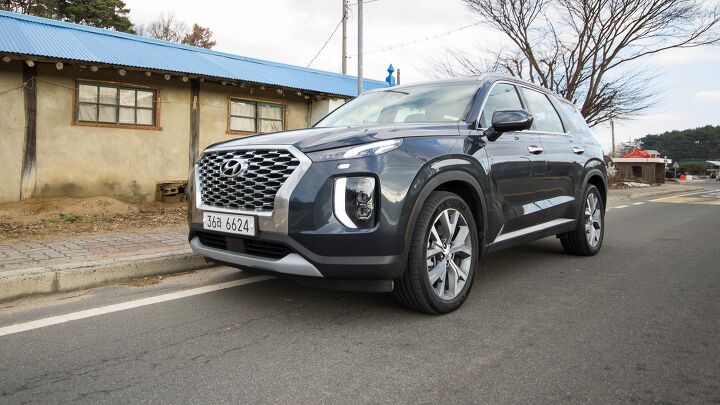





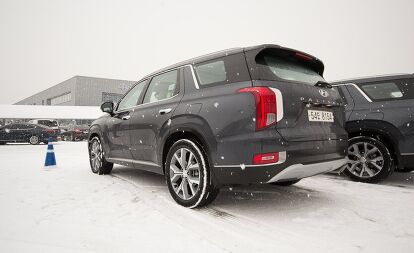




































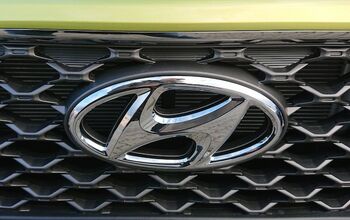
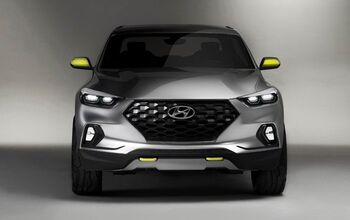

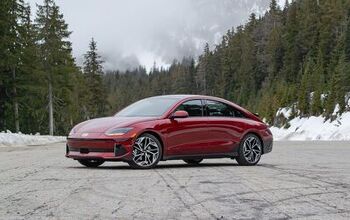
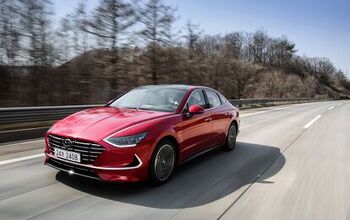
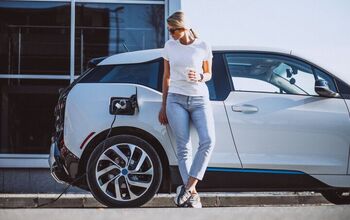
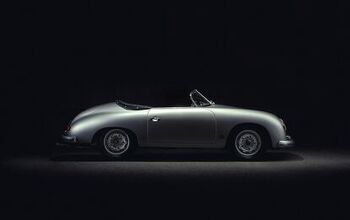
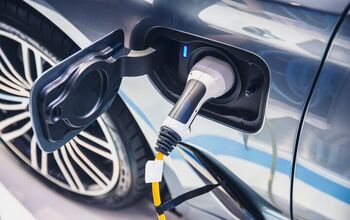


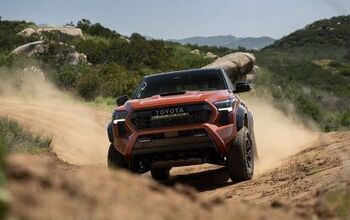



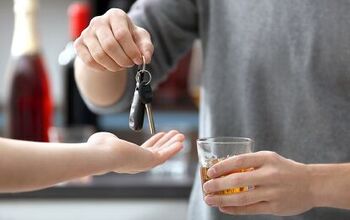
Comments
Join the conversation